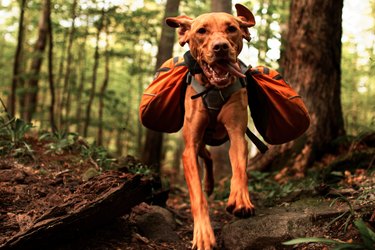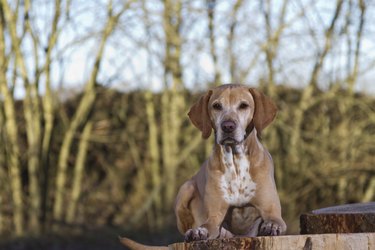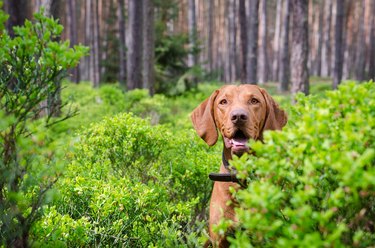
Adopting a dog is a huge commitment. Before settling on a breed, you need to find the right one for you. One that fits your lifestyle! Details like size, energy level, and personality can really affect not only your home but the happiness of your new furry friend. Doing your due diligence and researching is a great way to start off the adoption process! If you have the right kind of life for a gentle, affectionate, and energetic dog, then you might want to consider the vizsla, also known as the Hungarian pointer.
History of vizsla
Video of the Day
The vizsla's history stems back to the 10th century. The ancestors of the vizsla are assumed to have been hunters from Central Europe and then settled in what is now Hungary. They almost went extinct after World War II and in 1950, the breed was smuggled out of Hungary and into the United States.
Video of the Day
Vizsla dog characteristics
The breed is a favorite among dog enthusiasts and was admitted to the AKC registry in 1960. The vizsla is in the company of the Weimaraner, golden retriever, Labrador retriever, and the cocker spaniel in the American Kennel Club's sporting class dog breed group. The vizsla is a medium-sized dog and the breed standard notes that an adult male weighs 55 to 60 pounds and a female weighs between 44 to 55 pounds. Male vizslas can be up to 24 inches tall and females can get up to 23 inches tall.
Vizslas have a short-coat with a very distinguished, lean appearance. The vizsla has a noble appearance and is well proportioned. They are often very muscular and stoic — even statuesque at times in their stance. The viszla is an attractive dog who wins out often at dog shows.
They are robust but lightly built with strong jaws and well-developed teeth. Their floppy ears make for an adorable face coated in their reddened fur. Their coat color is a golden-rust with short, smooth hair. Since their hair is so short and their body so lean, they should not be left outside during the winter months.
Vizsla temperament & training

Breed is not a reliable indicator of temperament, however, the vizsla breed is generally described as gentle, affectionate, energetic, and eager. They have the nickname velcro vizsla as they become very attached to their owner. Most vizslas can be stubborn, but others can tend to be timid. They are sensitive and also protective and can be a good watchdog.
The purebred vizsla is a hunting dog by design. They are built to locate, point, and retrieve game. He is lively and affectionate to his people and possesses an above-average ability to take training.
These dogs mature slowly and may be four years old before they are fully mature. Early socialization is recommended and should continue throughout their entire life. Always use positive reinforcement training methods.
Vizsla dog grooming
Vizslas have a short, smooth coat and no undercoat which means they have minimal grooming needs. Use a rubber grooming brush on occasion to remove loose hair and give them an occasional bath as needed. Check and clean their ears regularly as wax can build up and the ears can get infected.
Vizsla exercise & health
Vizslas are high-energy dogs who need daily exercise. The vizsla thrives as part of an active family and they make great companions for active owners who spend a lot of time outdoors. It is best not to let these dogs off-leash in open spaces, but they do need the opportunity to run in a safe enclosure. Vizslas need mental stimulation as well, so incorporate training into their daily routine.
The expected lifespan of the Hungarian vizsla is 14 years. There are some health conditions common to the breed including hip dysplasia, eye disorders, epilepsy, and allergies. A reputable breeder will test their breeding stock and puppies for hereditary health problems.
Vizsla puppies

A vizsla puppy will typically reach their full, adult height by the time they are 12 months old, but will continue to fill out and may not reach their full weight until they are about 18 months old. When you purchase a puppy from a breeder who is a member of the Vizsla Club of America, be sure to ask about a complimentary membership to the organization.
Read more about Labrador retrievers. Read more about different working dogs.